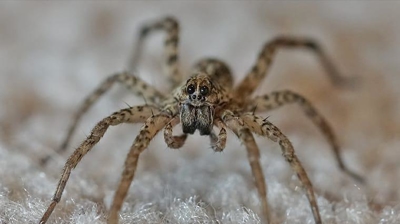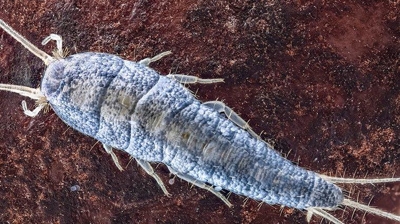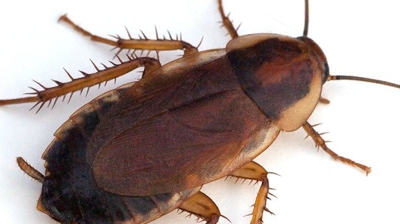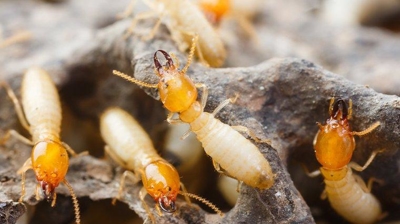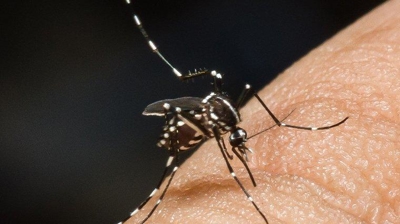
Centipedes & Millipedes
What are centipedes and millipedes?
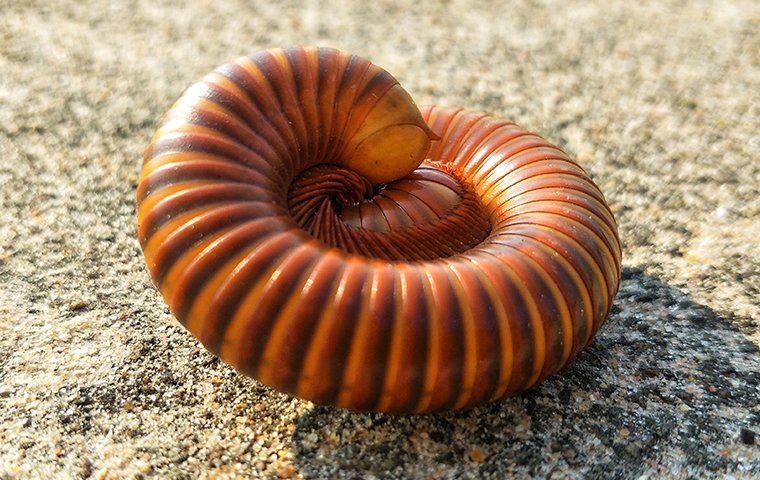
Both millipedes and centipedes are known as occasional invaders. They spend most of their lives outside, but they migrate into homes and other structures when the weather dictates it. Besides occasionally moving into our homes, other similarities include many legs, segmented bodies, an exoskeleton, and poor vision.
While these arthropods are similar, these leggy creatures do have many differences:
- Centipedes have an elongated, flattened body while millipedes have a cylindrical worm-like body.
- Millipedes are dark brown to black in color. Some millipedes have red or orange mottled markings. Centipedes are a yellowish-gray or brown color.
- Centipedes have long antennae; millipedes have short antennae.
- Millipedes have two pairs of legs per body segment; they move at a slow pace. Centipedes have one pair of legs per body segment and use their legs to move very quickly.
- Centipedes are carnivores and hunt down their prey while millipedes are scavengers and feed on decaying organic matter.
Are centipedes and millipedes dangerous?
Centipedes and millipedes aren't dangerous pests, but that doesn't mean we want them living near or inside our homes in large populations. While not a threat in the typical sense, there are some threats that these occasional invaders pose to people, though, if you or your family come into direct contact with them.
Centipedes — Centipedes can deliver painful bites. The good news is the venom they inject with their bites is not potent enough to cause health problems in people, but the bad news is that the bites can be quite painful.
Millipedes — Millipedes spray a "toxic" unpleasant-smelling liquid as a means of defense. Coming into direct contact with a millipede can cause a skin reaction.
Why do I have a centipede and millipede problem?

Why Choose White Knight Pest Control?
-
Expansive Service AreaWe have local offices in several states ensuring accessibility to quality pest control wherever you are!
-
18+ Years in BusinessOur goal as a business continues to be building trusting relationships with our customers & local communities.
-
Customized Treatment PlansEvery home and business is unique! We will tailor a pest control plan to fit your specific needs and budget.
-
Pest Specific Treatment OptionsWhether you're looking for general pest control or targeting one pest specifically, we've got you covered.
How Do I Get Rid of Centipedes and Millipedes?
Get rid of nuisance centipedes and millipedes with the help of White Knight Pest Control. We have a deep understanding of the pests we treat and provide the comprehensive pest control services needed to eliminate the entire infestation. At White Knight, our passion is controlling pests and protecting people and properties from pest problems. With the help of our effective pest control solutions and our team of dedicated pest control professionals, we can eliminate centipedes, millipedes, and other common pests.
If you're dealing with a centipede or millipede problem, reach out today to learn more about our residential pest control plans and commercial pest control solutions.

What Our Customers Are Saying
-
"Our technician was Mark and he was very polite, asked questions and did an excellent job doing the service."
Our technician was Mark and he was very polite, asked questions and did an excellent job doing the service. Thank you.
Bill Tefft -
"They are professional, but super friendly and their services are priced wonderfully."
Forest was very kind and professional. He did the work that was explained to us the previous appointment and made sure ...
Lori Bonine -
"Thank you, White Knight!"
Great service! Alex S helped out and he was really efficient, fast and extremely nice and polite. Thank you, White Knight!
Michael Leach -
"Great service!"
Great service! Alex S. helped out and he was really efficient, fast, and extremely nice and polite. Thank you, White Knight!
Eliot Garcia -
"He listened to my concerns, answered my questions, walked me through what he did and how it was going to help resolve our ant issue."
We've been working with White Knight for a few months now. I appreciate that when I called to get a reservice to address an ...
Christine Rominski -
"Tyrell did an amazing job when he came to service our house."
Tyrell did an amazing job when he came to service our house. He took his time and was very informative about the ant hills we ...
Rodin Chery -
"Hope service continues to be this great!"
Aaron showed up to do my first-ever treatment today. He was very kind and I was completely comfortable letting him into my ...
Cortney Love -
"Highly recommend."
Shannon is a very personable technician. Thorough and well-mannered person. Highly recommend. Great job!!!
Hector Suarez
Recent Blog Articles
View our blogs and resources below.
-
 Denver, CO Homeowners' Ultimate Spider Control GuideRead More
Denver, CO Homeowners' Ultimate Spider Control GuideRead More -
 Six Easy & Effective Silverfish-Prevention Tips For San Antonio Property OwnersRead More
Six Easy & Effective Silverfish-Prevention Tips For San Antonio Property OwnersRead More -
 Effective American Cockroach Control In Salt Lake CityRead More
Effective American Cockroach Control In Salt Lake CityRead More -
 What Not To Do About Termites On Your Fort Worth, TX PropertyRead More
What Not To Do About Termites On Your Fort Worth, TX PropertyRead More -
 The Damage Weeds Can Do To Your Salt Lake City LawnRead More
The Damage Weeds Can Do To Your Salt Lake City LawnRead More -
 Four Signs Your Houston Home Has A Bed Bug ProblemRead More
Four Signs Your Houston Home Has A Bed Bug ProblemRead More -
 The Trick To Effective Centipede & Millipede Control In Your Denver HomeRead More
The Trick To Effective Centipede & Millipede Control In Your Denver HomeRead More -
 A Handy Guide To Mosquito Prevention For Phoenix Property OwnersRead More
A Handy Guide To Mosquito Prevention For Phoenix Property OwnersRead More
